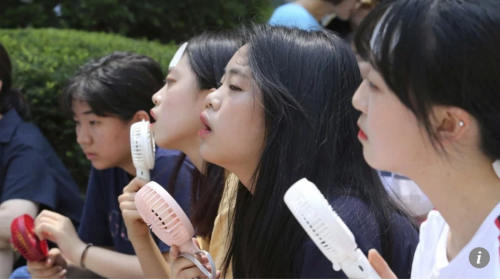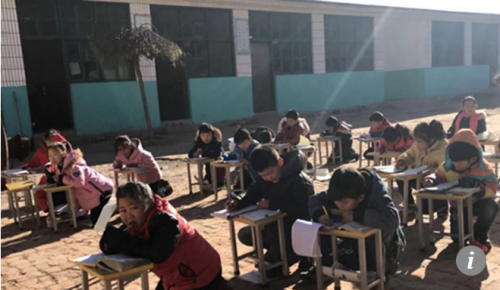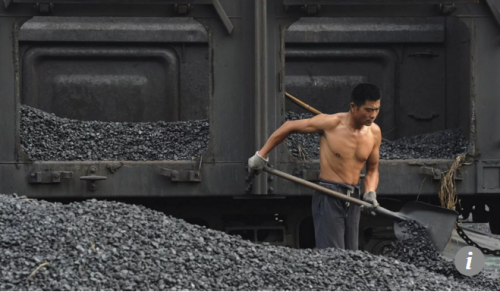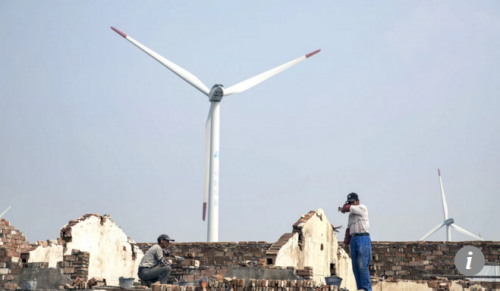本文转自《South China Morning Post》发布 的题为“How can China win its ‘war on pollution’ and meet its growing energy needs? Carbon capture technology may be key”的报道。
日期:2018.08.24
作者:Wenyuan Wu
原文链接:https://www.scmp.com/comment/insight-opinion/united-states/article/2161129/how-can-china-win-its-war-pollution-and-meet
Wenyuan Wu says coal consumption is surging in China, despite official plans for clean energy. To reduce emissions, the country should develop carbon capture technology on a mass scale.
吴文元表示,尽管有正式的清洁能源计划,但中国的煤炭消费正在飙升。 为减少排放,中国应大规模开发碳捕集技术。

China’s domestic energy consumption, considered one of the most reliable indicators of the country’s economic performance, rose by 9.4 per cent in the first half of 2018. Amid a heatwave, China also imported over 29 million tonnes of coal in July – the most in any month since January 2014.
中国的国内能源消耗被认为是该国经济表现最可靠的指标之一,2018年上半年增长了9.4%。在一股热浪中,中国7月份进口的煤炭数量超过2900万吨,这是自2014年1月以来的最大月度进口量。
Energy analysts already knew a coal resurgence was under way. In the first five months of 2018, 870 million tonnes of thermal coal was burned for electricity, up 12 per cent from 2017. Coal imports were up – 8.2 per cent, to 121 million tonnes – over the same period, as was domestic output (3.9 per cent) in the first half of the year.
能源分析师已经知道煤炭市场正在复苏。在2018年的前五个月,燃烧了8.7亿吨动力用于发电,比2017年增加了12%。煤炭进口量同比增长8.2%,达到1.21亿吨,同期国内GDP也是如此(上半年为3.9%)。
China, the world’s largest energy consumer and producer, once again faces a dilemma its officials have yet to resolve: how to balance energy sufficiency and clean energy? Coal, as always, is at the heart of the matter.
作为全球最大的能源消费国和生产国,中国再次面临其官员尚未解决的两难境地:如何平衡能源充足和清洁能源?煤炭,一如既往,是问题的核心。
On the one hand, soaring costs of imported petroleum and China’s proposed tariffs on liquefied natural gas will slow government plans to vary the country’s energy mix and reduce the still-dominant reliance on coal. Already, shock therapy – ordering households and industrial plants to switch from coal to gas – resulted in a heating crisis last winter, when natural gas was in short supply. Attempts to forcibly break the coal habit without providing dependable capacity have caused power shortages.
一方面,进口石油成本飙升以及中国对液化天然气的关税提议将减缓政府改变国家能源结构的计划,并减少对煤炭依然占主导地位的依赖。目前,冲击疗法 - 使家庭和工业厂房从煤炭转向天然气 - 导致去年冬天天然气供不应求的供暖危机。试图在不提供可靠能力的情况下强行打破煤炭习惯导致电力短缺。

On the other hand, the government announced its much-anticipated three-year environmental action plan last month, expanding the scope of the “war on pollution”. It increases the number of pollution control regions to 82 cities, prescribes national emission reduction goals, and sets specific coal consumption targets for different regions.
另一方面,政府上个月公布了备受期待的三年环保行动计划,扩大了“污染战争”的范围。它将污染控制区域的数量增加到82个城市,规定了国家减排目标,并为不同地区设定了具体的煤炭消费目标。
Even as coal use surges, the government has not become any less ambitious in setting targets. By 2020, heavily polluted cities are expected to deliver 18 per cent reductions in PM 2.5 concentrations and 15 per cent cuts in sulphur dioxide and nitrogen oxide emissions; mid-sized and larger cities should enjoy “good air” days 80 per cent of the time.
即使煤炭使用量激增,政府在设定目标方面也没有那么雄心勃勃。到2020年,污染严重的城市预计将使PM 2.5浓度降低18%,二氧化硫和氮氧化物排放量减少15%;中型和大型城市应该在80%的时间享受“好空气”的日子。
On some level, Beijing has acknowledged that its vision of cleaner energy doesn’t translate as coal-free. Eight hundred million tonnes of coal capacity a year are to be retired by 2020, but only to be replaced with cleaner, more efficient capacity. According to the International Energy Agency’s predictions, installed coal capacity in China will remain above 1050 gigawatts annually through to 2040.
在某种程度上,北京承认其清洁能源的愿景并未转化为无煤。到2020年,每年将有8亿吨的煤炭产能退役,但只能被更清洁,更有效的产能所取代。根据国际能源署的预测,到2040年,中国的煤炭装机容量将保持在1050千兆瓦以上。
What with domestic economic growth and a commodity boom, technological innovations to reduce the carbon footprint of fossil fuels are needed now more than ever. If emissions are going to be contained, these innovations must include the development and application of carbon capture and storage on a mass scale.
随着国内经济增长和商品繁荣,现在比以往任何时候都更需要减少化石燃料碳足迹的技术创新。 如果要控制排放,这些创新必须包括大规模碳捕获和储存的开发和应用。
For over a decade, research and development into this technology appears to have been at the centre of Beijing's climate commitments, alongside plans for wind, solar, hydro and nuclear capacity. A middle-of-the-road alternative to renewable sources, carbon capture, in theory, involves pulling and storing up to 90 per cent of carbon dioxide emissions from electricity generation and industrial processes.
随着国内经济增长和商品繁荣,现在比以往任何时候都更需要减少化石燃料碳足迹的技术创新。 如果要控制排放,这些创新必须包括大规模碳捕获和储存的开发和应用。

In 2013, the National Development and Reform Commission issued guidelines for local governments on promoting the development of integrated carbon capture and storage projects and reducing carbon emissions. By 2014, there were at least a dozen pilot projects. These projects featured capture rates varying from 3,500 to 120,000 tonnes of carbon dioxide a year and applications including oil recovery and reuse in the beverage industry.
2013年,国家发展和改革委员会发布了地方政府关于促进综合碳捕集与封存项目发展和减少碳排放的指导方针。到2014年,至少有十几个试点项目。这些项目的捕获率为每年3,500至120,000吨二氧化碳,以及饮料行业的石油回收和再利用等应用。
In 2017, Beijing announced the building of a large-scale carbon capture plant near Xian and the upgrading of a Yanchang project from a capture rate of 50,000 to 400,000 tonnes a year. On paper, these moves have made China a new global leader in carbon capture and storage endeavours.
2017年,北京宣布在西安附近建设一座大型碳捕集厂,并将延长项目的升级改造为每年5万至40万吨的捕获率。从理论上讲,这些举措使中国成为碳捕获和储存工作的新全球领导者。
In reality, the technology has not taken pride of place in Beijing’s clean energy calculations and is far from taking off. There are two major reasons for this. First, the end of the last commodity boom and Beijing’s regulatory freeze on coal output removed economic incentives. A main application of carbon capture is rejuvenation of ageing oilfields, which makes no financial sense unless crude oil prices surpass US$50 a barrel.
实际上,这项技术并没有成为北京清洁能源计算的骄傲,而且还远未实现。这有两个主要原因。首先,上一次大宗商品繁荣的结束以及北京对煤炭产量的监管冻结取消了经济激励措施。碳捕获的主要应用是老化油田的复兴,除非原油价格超过每桶50美元,否则没有经济意义。
Second, carbon capture has faced scientific feasibility issues. According to an International Energy Agency report on energy technology, operational carbon capture plants can only sequester about 7.5 per cent of the emissions that need to be eliminated every year by 2025 to stay below 2 degrees Celsius of global warming.
其次,碳捕获面临科学可行性问题。 根据国际能源机构关于能源技术的报告,运营碳捕集厂只能隔离到2025年每年需要消除的排放量的7.5%,以保持低于2摄氏度的全球变暖。

Technical concerns have been raised over carbon dioxide escaping after it is injected into deep saline aquifers, oil and gas fields, and deep coal seams. However, in a hopeful, recent development, a team led by a Peking University scientist has found that carbon dioxide can be successfully buried in deep-sea sediment.
在将二氧化碳注入深盐水含水层,石油和天然气田以及深层煤层之后,人们对二氧化碳逃逸产生了技术问题。 然而,在一个充满希望的近期发展中,由北京大学科学家领导的一个小组发现,二氧化碳可以成功地埋藏在深海沉积物中。
Carbon sequestration can also happen above ground. A five-year research project found that, from 2011 to 2015, environmental resources such as forests, crops and shrubs in China sequestered about 201.1 million tonnes of carbon a year, or 14.1 per cent of the country’s annual carbon emissions.
碳封存也可能发生在地面上。 一项为期五年的研究项目发现,从2011年到2015年,中国的森林,农作物和灌木等环境资源每年封存约20110万吨碳,占该国每年碳排放量的14.1%。
Is the stage now set for China to improve its carbon capture efforts? Rising crude oil prices have reached the break-even point for the use of carbon capture in oil recovery. After years of structural reforms, China’s coal sector is also in better shape to embrace market discipline and environmental requirements.
中国现在是否正在努力改善碳捕集工作? 原油价格上涨已经达到了在石油采收中使用碳捕获的收支平衡点。 经过多年的结构改革,中国的煤炭行业也在更好地适应市场纪律和环境要求。
Beijing’s top-down economic governance could be a strong driver of the expansion of carbon capture, and a coordinated push would keep costs down.
北京自上而下的经济治理可能是碳捕获扩张的强大推动力,协调推动将降低成本。
The central government will have to provide incentives, and local governments will have to continue to oversee coal plants, of course. But this could be a golden opportunity to pursue carbon capture on a mass scale, and take more meaningful action on climate change.
当然,中央政府必须提供激励措施,地方政府将不得不继续监督煤电厂。 但这可能是大规模实现碳捕获的黄金机会,并对气候变化采取更有意义的行动。
Wenyuan Wu holds a PhD in international studies from the University of Miami. Her research covers governance and energy reform issues in China, the United States and Latin America.
吴文元拥有迈阿密大学国际研究博士学位。 她的研究涉及中国,美国和拉丁美洲的治理和能源改革问题。
This article appeared in the South China Morning Post print edition as: Time is right to pursue carbon capture on mass scale